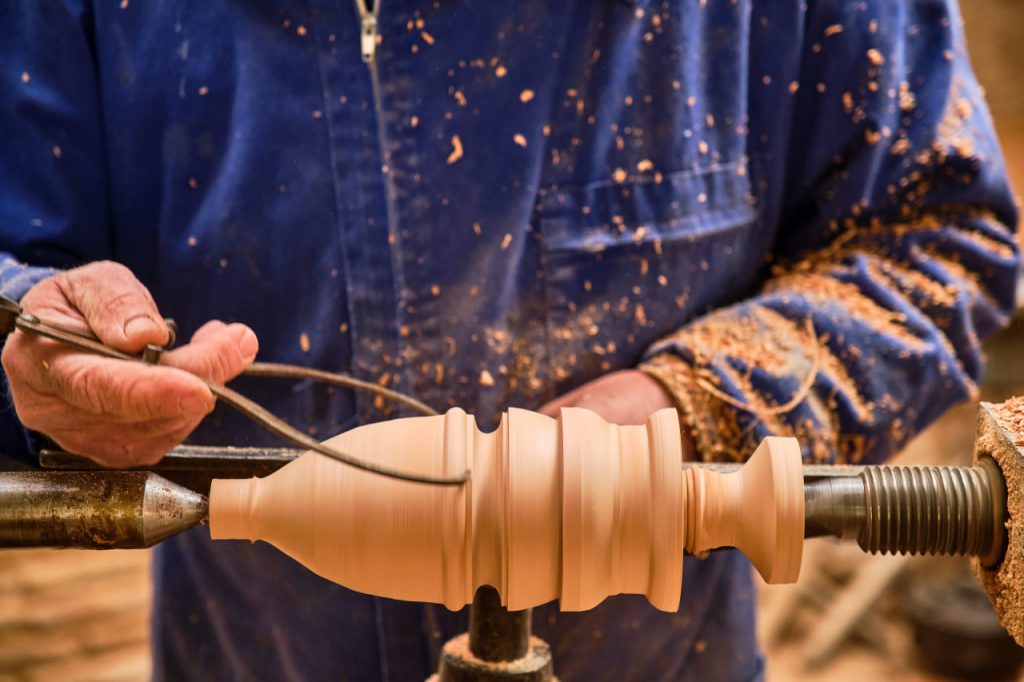When starting your woodcarving journey, having the right tools is essential for success. Whether you’re a beginner or a more advanced carver, the tools you use can greatly affect the quality of your work and the ease with which you complete your projects. In this article, we’ll go over the basic tools every woodcarver should have in their toolkit and why they are important.
1. Carving Knives
Carving knives are one of the most essential tools for any woodcarver. These knives come in a variety of shapes and sizes, each designed for specific tasks.
- Detail Knives: These small, sharp knives are used for intricate detail work, like carving fine lines or textures in your wood piece. They have a pointed tip that allows for precise carving.
- Sculpting Knives: Sculpting knives typically have a curved blade and are used for more substantial carving. They help you remove larger sections of wood when shaping your project.
A good quality carving knife will give you better control over your carving and help you work with precision. As you advance in your craft, you may choose specialized knives for different techniques, but a basic detail and sculpting knife are a great place to start.
2. Gouges
Gouges are essential for removing large amounts of material from your carving block. They come in various sizes and shapes, each designed for a different purpose. Some common gouge types include:
- U-Gouge: A U-shaped gouge is used for creating rounded, concave areas in your carving. It’s perfect for shaping and smoothing curves or hollowing out spaces.
- V-Gouge: The V-shaped gouge is great for cutting sharp lines and detailed edges. It’s commonly used for carving small features like folds in fabric or fine details in faces or animal forms.
Having a variety of gouges will allow you to work efficiently and with more versatility as you carve. Beginners should start with a few basic gouges, and over time, they can expand their collection.
3. Chisels
Chisels are used to carve and shape larger pieces of wood. They come in many different shapes and sizes, each designed for specific tasks. Some types of chisels include:
- Flat Chisels: These chisels have a flat, straight edge and are ideal for carving large, flat surfaces or cutting straight lines.
- Fishtail Chisels: Fishtail chisels are narrow at the tip and wider near the handle, making them perfect for intricate work in tight spaces, such as carving around corners or small details.
Like gouges, chisels can be found in different sizes, and owning a selection will help you achieve different effects in your carving work.
4. Carving Mallet
A carving mallet is essential for driving your carving tools into the wood without damaging the blades. Unlike a hammer, a mallet has a soft head (often made of wood or rubber), which helps distribute the force evenly and protects your tools from unnecessary wear.
Using a carving mallet allows you to apply force with precision, making it easier to carve through denser wood while maintaining control over your tools. Beginners should select a mallet that feels comfortable and well-balanced in their hand.
5. Sharpening Tools
One of the most important aspects of woodcarving is keeping your tools sharp. Dull tools can be frustrating to work with and can lead to mistakes or injuries. To keep your tools in top condition, you’ll need a sharpening system.
- Sharpening Stones: A good sharpening stone will help you hone your tools to a fine edge. There are different types of stones, including water stones and oil stones, each with its own advantages.
- Strop: A strop is used to polish the edge of your tools and keep them razor-sharp. It’s a great finishing touch to any sharpening routine.
Regular maintenance of your tools is essential to ensure they last and perform well over time.
6. Safety Gear
Although woodcarving is a fun and creative process, safety should always come first. Protective gear like finger guards, carving gloves, and eye protection can help you avoid injuries while carving. As you carve, be mindful of where your hands and fingers are, especially when working with sharp tools.
Conclusion
Equipping yourself with the right tools can make a world of difference in your woodcarving projects. As a beginner, it’s best to start with a small selection of high-quality tools and gradually expand your collection as you develop your skills. With the right equipment and practice, you’ll be able to tackle a wide range of woodcarving projects, from simple decorative items to intricate sculptures. Always remember that the quality of your tools and the care you take in maintaining them will directly impact the quality of your work.

